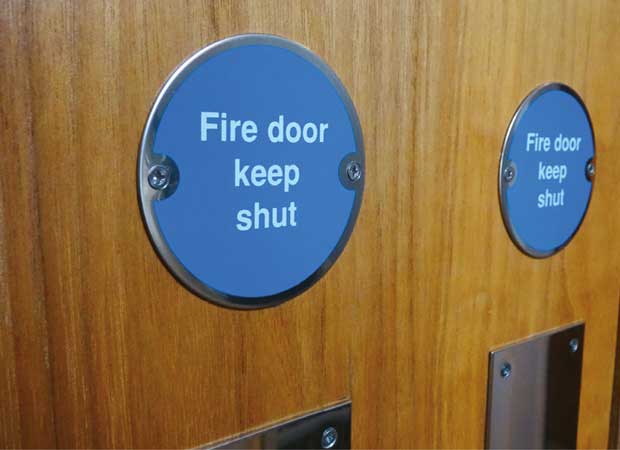MOVING TO EUROPEAN CLASSIFICATION
The performance of fire doors tested to the British Standard has been proven as robust and reliable. However, as the existence of two testing and classification systems was raised as a concern in the Independent Review of the Products Testing Regime, a transition to the European standard now forms part of the Government’s aim to unify the UK’s testing systems and remove concerns about having two systems for determining the performance of a fire door.
The European testing classification is the most recent standard and is also currently being reviewed to further improve its effectiveness and reduce risks in the process – which will help future-proof the testing process.
When directly comparing the classifications, the differences between BS 476-22 and BS EN 1634-1 are nuanced and it’s important to fully understand the three key factors surrounding fire resistance:
- 1. Both BS 476-22 and BS EN 1634-1 use the same time temperature curve from ISO 834-1 to control the temperature within the furnace.
- 2. BS 476-22 uses unshielded thermocouples to monitor the furnace temperature while EN 1634-1 uses shielded thermocouples that are less responsive to the changes in temperature resulting in increased heating energy in the early stages of the test.
- 3. The neutral pressure plane is positioned lower relative to the notional furnace floor level in a BS EN 1634-1 test (500mm compared to 1000mm) resulting in greater relative positive pressure conditions at the top of the door which potentially increases hot gases and flaming on the unexposed side.
POTENTIAL TIMELINE CHALLENGES
The technical committee responsible for drafting the product standards for fire doors is expecting to receive instruction from the European Commission following the processes established under the new EU Construction Product Regulation (CPR). This means that it is possible for new European Product Standards, replacing EN 14351-1, EN 14351-2, EN 13241 and EN 16034 to be available before the Government’s target date.
The upcoming UK Construction Products Regulations will also shed more light on things like “safety critical products” and whether the UK Government will assimilate the new EU new European Construction Products Regulation (CPR) that harmonises rules for marketing construction products in the EU. These and other changes in National or European Regulations may force changes within the Building Regulations within the next five years.
WHAT STEPS TO TAKE NOW
As the standard change comes into effect in 2029, specifiers and facilities managers can remain confident in the fire doors in the buildings for which they are responsible that have been rigorously tested to the BS 476-22 standard.
To be certain of a fire door’s performance, it’s important to use a third-party certified fire door, such as those manufactured by members of the BWF Fire Door Alliance. Third-party certification provides crucial independent evidence that a fire door, when correctly installed and maintained, is fit for purpose and complies with fire door regulations.
The BWF will continue to work with the National Standards Body BSI and the European Standards Body CEN to ensure that the European standards deliver robust results. We will also be working closely with our manufacturing members to transition to the new system ready for the 2029 deadline.
In the meantime, for those responsible for fire doors within buildings, there’s no need to replace fire doors that meet the British Standard which are correctly installed and maintained by a competent person and remain fit for purpose.
Now is the time for those responsible for fire doors to gain a full understanding of the testing systems and the upcoming changes to ensure they are prepared when the transition takes place in 2029.
For more information, visit: https://www.bwf.org.uk/





